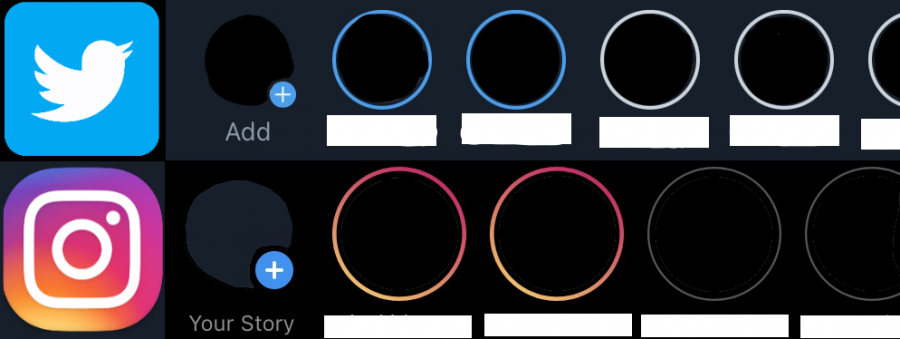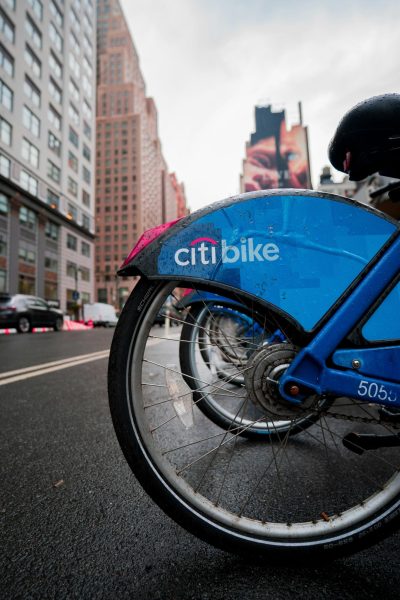Numerous Social Media Redesigns Spread “Stories” Features
Here is a comparison of the stories feature between Twitter and Instagram (on the top and bottom, respectively). When you have a story, the “Add” ring will be displayed like the unviewed stories in their respective apps. Snapchat, the first to implement the stories feature, differs from the other two, which are practically identical within the general design of their apps. With Snapchat, your story is in the top-left and the lineup of those you follow is moved down.
Social Media is certainly popular in our present time, with a plethora of platforms serving different purposes. Or at least that was how it was until recently, with each app offering something unique. Snapchat was used for sharing fleeting moments as they would only last 24 hours, while Instagram was more permanent. That changed with the advent of Instagram’s ‘stories’ feature, similar to Snapchat’s stories. When the co-founder and CEO of Instagram, Kevin Strum, was asked about these similarities in an interview with Techcrunch, he said, “They deserve all the credit,” in regards to Snapchat trailblazing the feature.
This was not the first time, and would prove to not be the last time, that a social media service encroached on the features of another. This was not even the first time that Instagram had been the subject of scrutiny for copying media forms. The introduction of video sharing to their app was in the wake of the now-defunct Vine’s peak in popularity, Vine being a premiere video-sharing platform while it was active.
The most recent redesign to disrupt a major social media app was with Twitter, and the introduction of “fleets.” Fleets are, in practice, another story-styled service, appearing at the top of the app and bearing a striking resemblance to Instagram’s (see the photo above for an illustration of this practice). This doubled-degree of a derivative appeared suddenly for users of Twitter following a brief testing phase in Brazil, spawning a slew of posts mocking the feature.
The introduction of a ‘stories-esque’ feature is not exclusive to Twitter. Snapchat originated the stories feature 7 years prior to Twitter, but even ignoring that, Twitter was late to the trend. Twitter also missed the wave of other services that cloned the feature, with Instagram, Facebook, and Whatsapp all having their stories features unabashedly unchanged from Snapchat’s naming of the feature as “stories,” 4 years before Twitter.
If Twitter was late to the feature, waiting 4 years to add it, what could have driven them to do so? Twitter added them as an alternative to regular tweeting, claiming that “there’s so much pressure to rack up Retweets and Likes” in a blogpost. Fleets’ fleeting presence negates that. While Twitter’s feature of fleets follows in line with Instagram’s interpretation, it differs in one feature — it does not have advertisements.
While we may not want to admit it, ultimately social media platforms serve to turn a profit. Other platforms’ stories feature advertisements to make money. This extends beyond the stories. In the same month of Twitter’s fleet’s introduction, Instagram redesigned its layout in many ways, changing where certain sections are located. Additionally, a new feature was added where accounts that you follow have their non-recent posts cut off, and are instead replaced by “Suggested posts,” a change considered poor by 94% of students who use the app, in a poll that I conducted. The change confused Sommaya Haque ’21. “I am not sure why Instagram would prioritize the shopping button over the post and favorite buttons, when it’s a media sharing app,” Haque said.
Haque was not the only one wondering about the changes. Alina Chan ’21 called the new shopping tab feature “useless,” stating, “I don’t need to use Instagram for online shopping.” Alexander Gallagher ’21 described the changes as “switching to conform with increased marketing and consumerism.” While all the changes serve individual purposes, they ultimately are changes for the profit of the company.
Stories are a factor of profit all the same, being stuck in the crossroads of all of the factors that drive development and redesigns in social media. Initially the defining feature of Snapchat, stories were incorporated into other media platforms that surpassed the progenitor of the feature in Snapchat.
While we may not want to admit it, ultimately social media platforms serve to turn a profit. Other platforms’ stories feature advertisements to make money.
Scott Ernsberger is a Managing Editor/Advisory Editor for ‘The Science Survey.' As a Managing Editor, Scott helps with copy-editing and keeping deadlines,...











